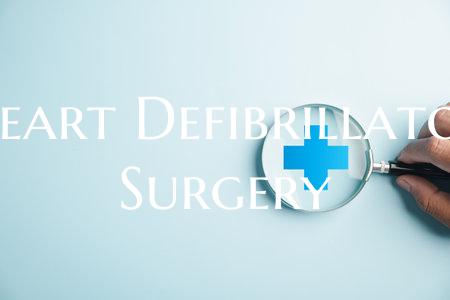
Heart Defibrillator Surgery
Introduction: Heart defibrillator surgery, also known as implantable cardioverter defibrillator (ICD) implantation, is a life-saving procedure performed to help individuals with certain heart conditions manage irregular heartbeats. This advanced medical device acts as a safeguard against sudden cardiac arrest by monitoring the heart's rhythm and delivering electrical shocks when necessary. Understanding the process, benefits, and recovery associated with heart defibrillator surgery is crucial for patients and their loved ones.
Procedure: During heart defibrillator surgery, the patient is typically placed under local anesthesia, and a small incision is made near the collarbone. The ICD device is then implanted under the skin and connected to leads that are threaded through blood vessels into the heart. These leads enable the device to monitor the heart's electrical activity and deliver shocks if abnormal rhythms are detected. The procedure is minimally invasive and generally takes a few hours to complete.
Benefits: The primary benefit of heart defibrillator surgery is the prevention of sudden cardiac arrest in individuals at risk due to conditions such as ventricular tachycardia or fibrillation. The device continuously monitors the heart and can deliver life-saving shocks to restore normal rhythm, thereby improving the patient's chances of survival. Additionally, ICDs can provide peace of mind to both patients and their families, knowing that immediate action will be taken in case of a life-threatening arrhythmia.
Recovery: After heart defibrillator surgery, patients may experience discomfort at the incision site and soreness in the chest for a few days. Most individuals can resume their daily activities within a week, avoiding heavy lifting or strenuous exercise for a few weeks. Regular follow-up appointments with healthcare providers are essential to ensure proper functioning of the ICD and monitor the heart's rhythm. Patients are advised to avoid close contact sports or activities that may interfere with the device.
Conclusion: Heart defibrillator surgery plays a crucial role in managing heart rhythm abnormalities and reducing the risk of sudden cardiac arrest. By understanding the procedure, benefits, and recovery associated with ICD implantation, patients can make informed decisions about their cardiac health and take necessary precautions for a successful outcome. Consulting with healthcare providers and following post-operative guidelines are essential steps in ensuring the effectiveness of the implanted device and maintaining overall heart health.